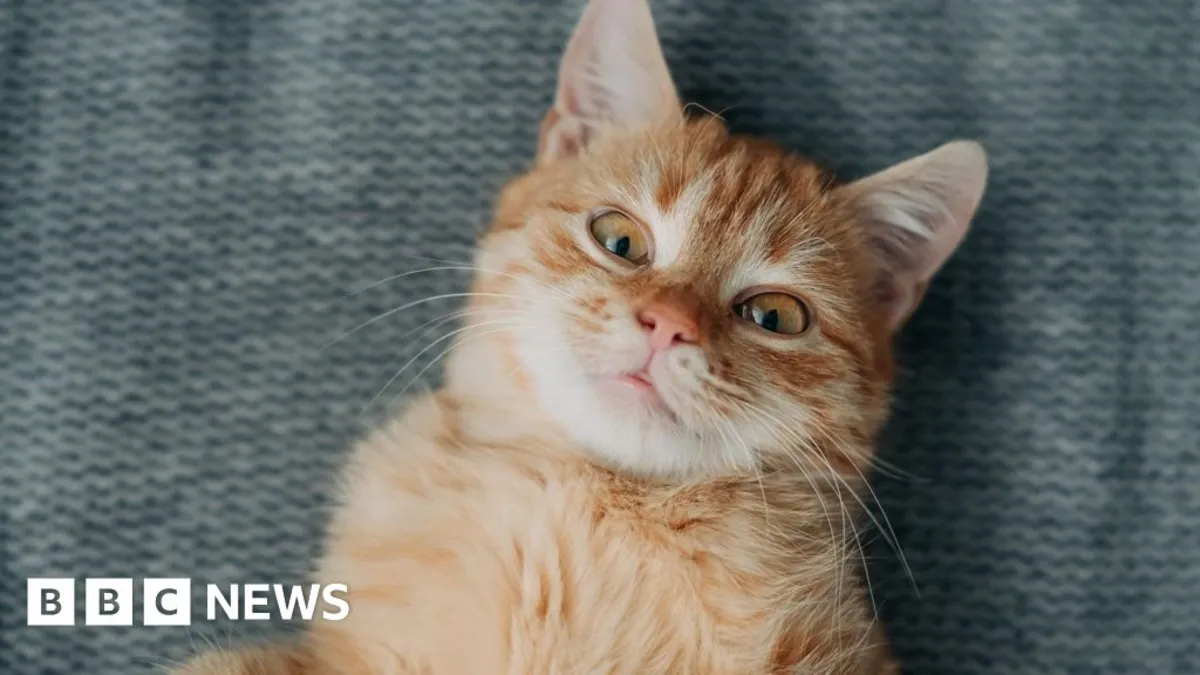
In an exciting breakthrough for both the scientific community and cat lovers alike, researchers have unveiled the genetic secrets behind the distinctive orange coloring of ginger cats. These furry icons, reminiscent of beloved characters like Garfield and Puss in Boots, owe their unique appearance to a specific genetic mutation that has perplexed scientists for decades. Two teams from Kyushu University in Japan and Stanford University in the US published their findings in simultaneous studies, shedding light on the missing DNA that contributes to the vibrant coloration of these feline friends.
The research revealed that ginger cats are characterized by a missing segment of genetic code in the ARHGAP36 gene, a critical component in the production of pigments within the cells responsible for their skin, fur, and eye color. Melanocytes, the cells that produce these pigments, show increased activity of the ARHGAP36 gene when this specific DNA segment is absent. As a result, ginger cats exhibit lighter pigmentation, giving them their iconic hue.
For years, it has been recognized that genetics play a vital role in determining a cat's color. However, the precise location of the genetic code responsible for orange tabby cats remained elusive until now. This genetic discovery not only excites scientists but also brings hope for understanding potential health risks associated with orange cats.
Another fascinating aspect of the study is the observation that ginger cats are predominantly male. This phenomenon is directly linked to the fact that the gene controlling this pigmentation is situated on the X chromosome. Male cats possess one X and one Y chromosome, making them more susceptible to expressing the ginger coloration with just one copy of the mutated gene. In contrast, female cats, with their two X chromosomes, require both copies to be affected to display the same degree of orange pigmentation, often resulting in mixed coloring.
Professor Hiroyuki Sasaki, a geneticist at Kyushu University, explains that this genetic mechanism creates distinct patches of color in female cats. During early development, one of the X chromosomes in each cell is randomly deactivated, leading to variations in coat color across cells.
This groundbreaking research began as a passion project for Professor Sasaki, who, despite his retirement, sought to continue his exploration of the genetics behind orange cats. Through crowdfunding efforts, he raised an impressive 10.6 million yen (£55,109) from thousands of cat enthusiasts worldwide. This grassroots support underscores the deep connection and commitment that many individuals share for their feline companions.
One touching contribution came from siblings who donated their pocket money, expressing their desire for the research to benefit calico cats. This community backing not only fueled the research but also highlights the collective love for these remarkable animals.
The implications of the ARHGAP36 gene extend beyond fur color. This gene is also active in various body systems, including the brain and hormonal glands, suggesting that mutations could influence other health conditions or behavioral traits in cats. Professor Sasaki notes that while many cat owners believe there is a correlation between coat color and personality, scientific evidence is still lacking. However, this intriguing concept opens the door for future studies to explore the connections between genetics and feline behavior.
The recent discoveries about ginger cats not only provide answers but also pave the way for further research into feline genetics. As scientists continue to delve into the complexities of cat DNA, we can anticipate more revelations that enhance our understanding of these beloved companions and potentially lead to improved health outcomes for various cat breeds. The journey to unravel the mysteries of feline genetics has only just begun, and the excitement among researchers and cat lovers is palpable.